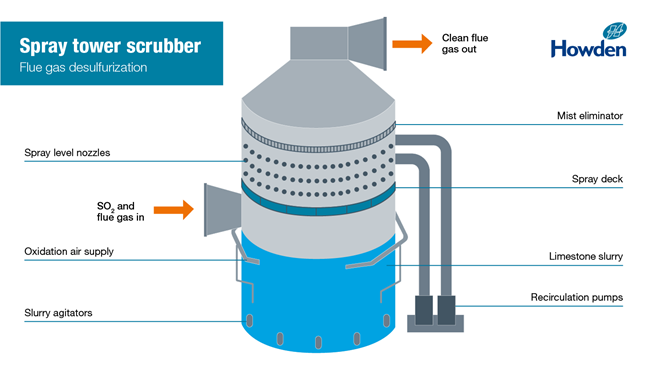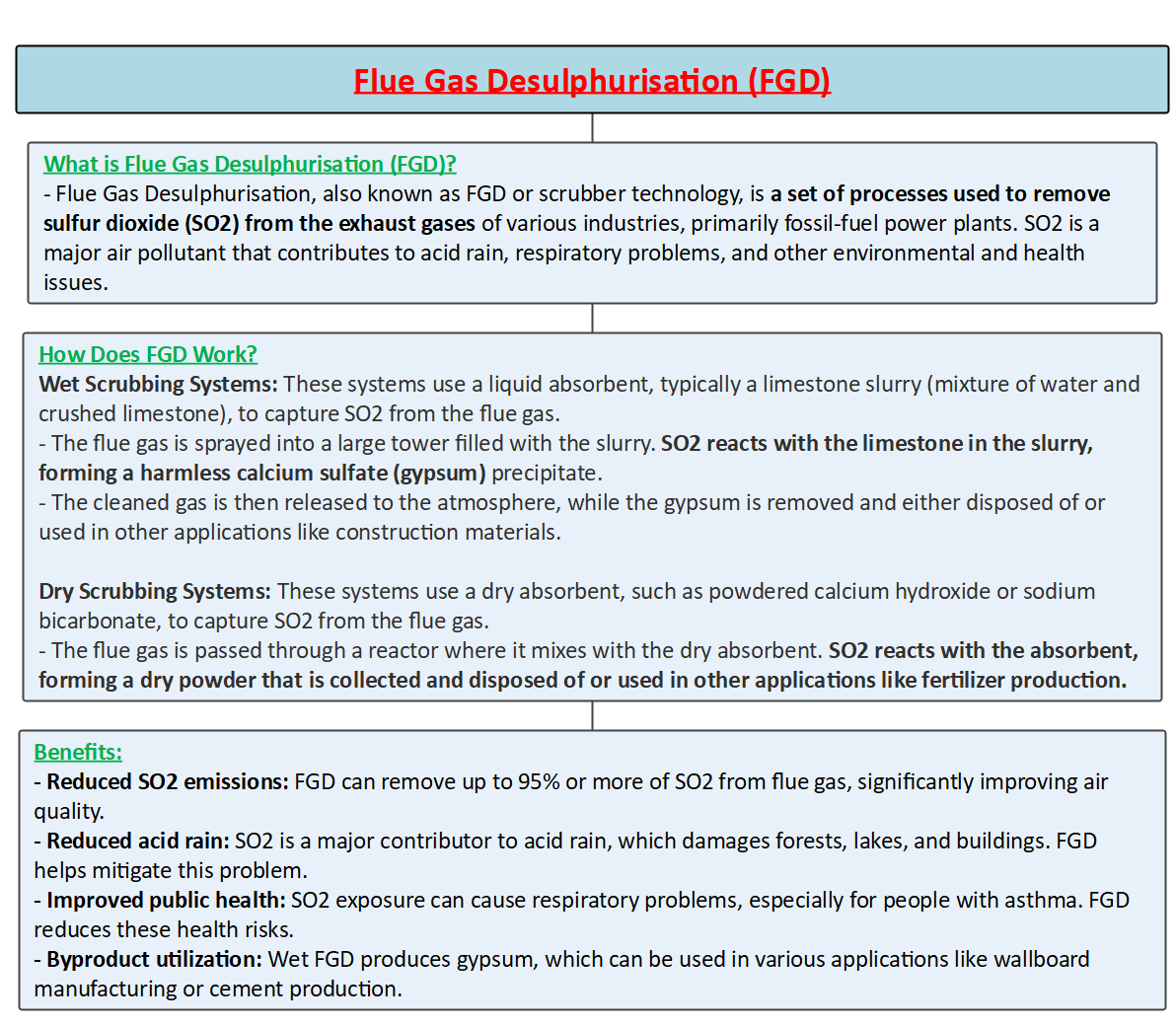Free Courses Sale ends Soon, Get It Now


Free Courses Sale ends Soon, Get It Now



Copyright infringement not intended
Picture Courtesy: https://www.howden.com/en-gb/articles/flue-gas-desulfurization-acid-rain
Context: Thermal power plants are required to install Flue Gas De-sulphurisation (FGD) equipment to adhere to emission regulations, as per the guidelines set by the Ministry of Environment.
Details
Emission Norms Compliance
Monitoring and Oversight
Flue Gas De-sulphurisation (FGD)
|
FGD is a process that uses a sorbent, usually lime or limestone, to react with SO2 in the flue gas and convert it into harmless products. The sorbent can be injected as a dry powder, sprayed as a wet slurry or circulated as a seawater solution. The reaction products can be collected as solid residues, dissolved in water or discharged into the sea. |
Why is FGD important?
Different types of FGD systems
Wet scrubbing
Spray-dry scrubbing
Wet sulphuric acid process
Dry sorbent injection

Conclusion
|
PRACTICE QUESTION Q. With carbon removal technologies still in their infancy, what are the ethical and feasibility concerns surrounding large-scale implementation of negative emissions strategies? To what extent can they be relied upon to compensate for continued emissions, and what role should they play in our climate mitigation strategy? |
© 2024 iasgyan. All right reserved